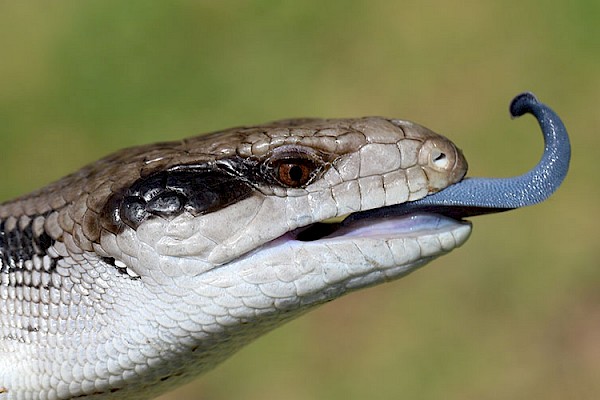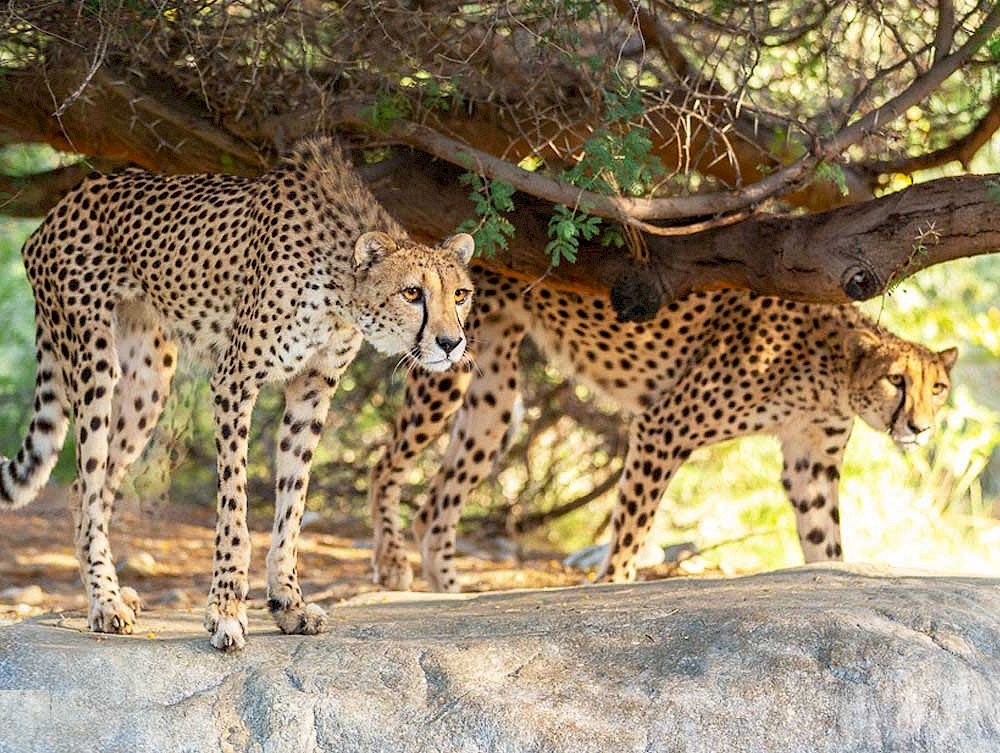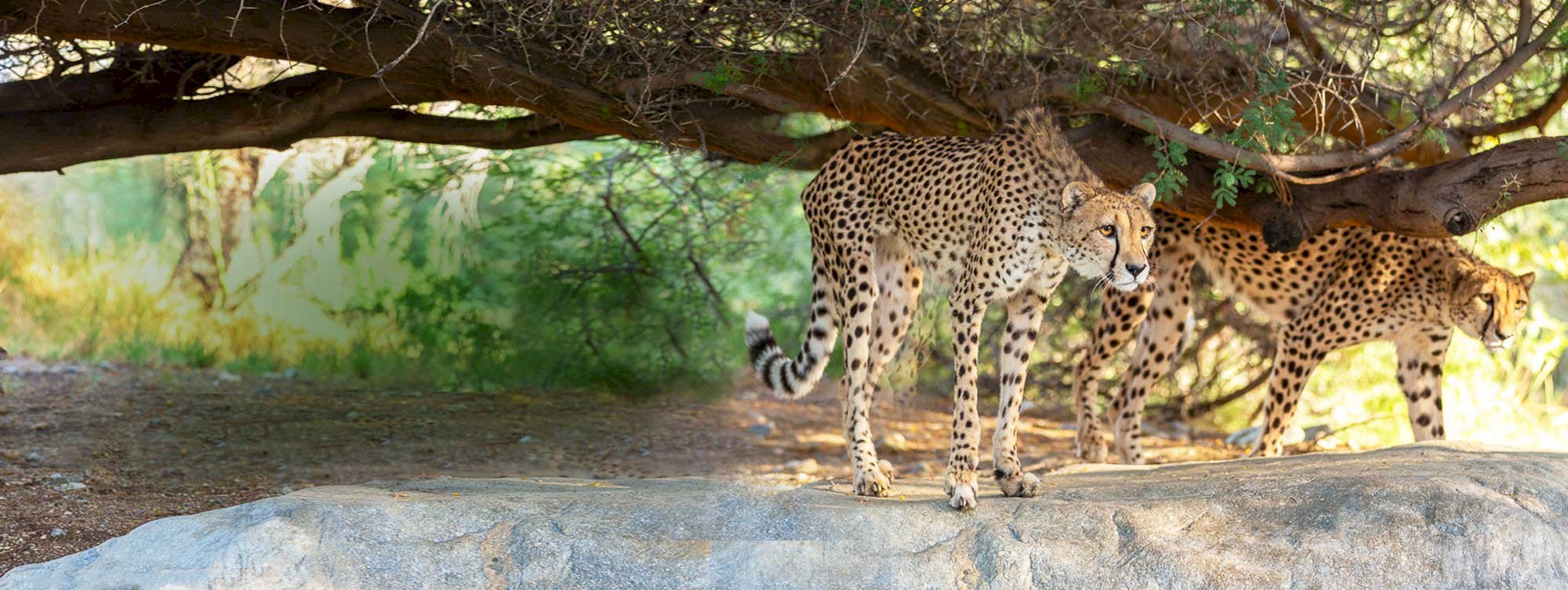

Blue-Tongued Skink
Tiliqua scincoidesFamily
ScincidaeConservation Status
Least ConcernDistribution
Northern AustraliaHabitat
Grasslands, shrublands, savannas, forestsFactoid
Blue-tongued skinks are threatened by habitat loss, increasing wildfires due to climate change, agricultural toxins, and predation by foxes, dogs, and feral cats.The blue-tongue skink spends most of the day searching for food. Although it is slow-moving, its brown-banded body helps it camouflage into the surrounding landscape.
When threatened, blue-tongue skinks open their mouth wide and deploy their ultraviolet blue-tongued, sharply contrasting their pink mouth. They also flatten their body to appear larger, thereby frightening potential predators.
Blue-tongued skinks get around using a serpentine (snake-like) movement, slithering on their bellies and using their feet to push themselves along.









